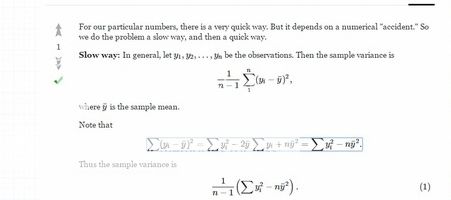davidgoes4wce
Well-Known Member
Re: University Statistics Discussion Marathon
Speaking of Statistics have any of you guys used R Programming and Statistical software? (for say work or university purposes)?
I want to be more proficient at this software and I enjoy using it in comparison to Excel, SPSS or Minitab for that matter as the speed is alot quicker.
Speaking of Statistics have any of you guys used R Programming and Statistical software? (for say work or university purposes)?
I want to be more proficient at this software and I enjoy using it in comparison to Excel, SPSS or Minitab for that matter as the speed is alot quicker.



